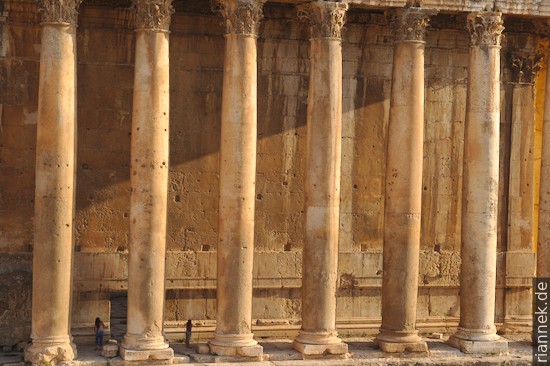
Beirut’s city centre is liberal and full of life. In the pseudo old town full of smart boutiques that has risen from the ruins of war, one feels far away from the Middle East, if only there weren’t tanks on every corner. Even in the bars and clubs you can see that there is money here, wherever it comes from, the prices are quite European.
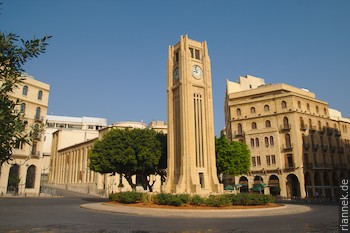
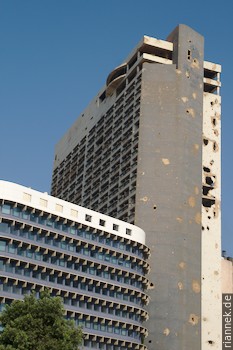
The only explanation I can find for the sudden wealth are the Lebanese in exile, of whom there are twice as many as Lebanese in the country.
A few blocks away, there are always half-collapsed houses full of bullet holes, reminiscent of the civil war in which dozens of factions fought each other. Unbelievable how much conflict potential fits into such a tiny country: clerical fascist Christians (the Maronite Phalange), nationalist Christians, pan-Arab Nasserist nationalists, Islamist pro-Iranian Shiites (Hezbollah), pro-Syrian Shiites, Islamist Sunnis, the Palestinian PLO, the pro-Israeli South Lebanese Army, communists of various shades, pro-Syrian Baathists, pro-Iraqi Baathists and so on and so on…. And in between, Israel and Syria also intervened. The flags of various militias (or now parties) hang everywhere in the streets of the cities. Posters celebrating martyrs are stuck on the walls.
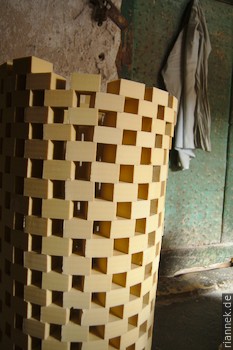
In Tripoli in the north of the country, the conflict is palpable: soldiers sit behind sandbags, tanks rattle through the street, placarded party buildings are full of bullet holes and I don’t stay long to look at Mamluk architecture.
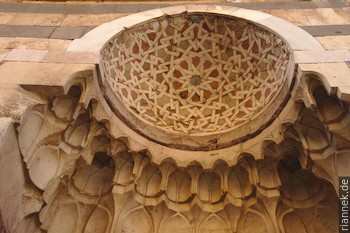
Just outside Beirut is the Jeita Cave. Normally, I’m not a big fan of show caves because the light and the concrete walkways take away from the adventurous cave feeling. But the two chambers crammed with fantastic stalactites are so huge that I am impressed. One formation looks like oversized psyllo mushrooms, which definitely sparks my imagination. Shortly afterwards, a fat attendant with a cross dangling from his gold chain asks me if I have seen the face of Jesus. He leads me back a few steps to a face that has neither long hair nor a full beard, but a goatee on the chin. How can one be so blinded by fundamentalism as to confuse Jesus with Lenin? Fortunately, I had arrived quite early, while I was taking a boat through the lower chamber, the large groups were arriving. It is a tourist attraction after all, complete with mini zoo and small train.
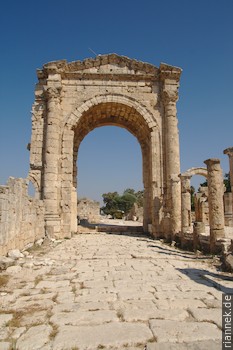
I was initially disappointed by the ruins in Byblos and Tyre, especially because they are surrounded by high rises instead of lying lonely in a lovely landscape. Maybe I’m a bit influenced by romantic paintings, even though I don’t like them at all? In any case, another traveller shared his enthusiasm with me in Byblos. Here you can see history spanning tens of millennia, even if most of it is just foundation walls. Very, very old foundation walls, mostly from the 2nd and 3rd millennium BC. Over there Chalcolithic houses, on the left two Early Bronze Age temples and a gate, on the right Phoenician graves, behind a Persian fortress, here a few Roman columns, in front of us a Crusader castle and around it contemporary concrete…
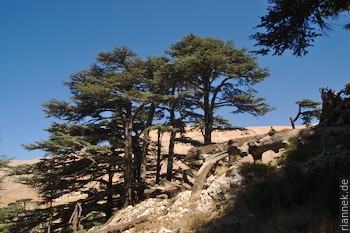
This section of the Levant became rich mainly from cedar wood (glass and purple were added under the Phoenicians). Cedar wood was so popular for a long time that at one point the Roman Emperor Hadrian had to establish protected areas. It didn’t help, the last remnants of the forests are so tiny that the word “grove” is almost an exaggeration.
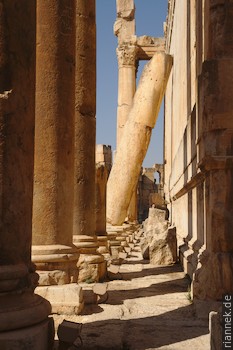
I see Roman ruins in Tyre and Baalbek. Tyre has, among other things, a huge horse racing track, but it can hardly compete with the temples of Baalbek, which are among the most gigantic buildings ever built by the Romans. The dimensions of the Temple of Jupiter can be guessed at from the few standing columns. The somewhat smaller Temple of Bacchus is much better preserved. The temples escaped the fate of other ruins to serve as a quarry, as the Arabs converted them into a fortress.
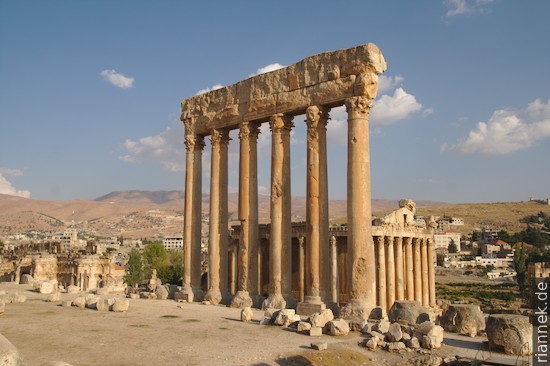
Baalbek is a stronghold of the Islamist Hezbollah, the Iranian-sponsored militia whose flags and posters can be seen everywhere. One poster, for example, shows the chief mullah with a machine gun in a victory pose in front of the Dome of the Rock in Jerusalem. He smiles humorously, perhaps more diabolically. The poster expresses the main goal: the destruction of Israel. Not only in Baalbek (e.g. also in Syria) do traders sell Hezbollah shirts and lighters and I even meet tourists who think they are liberation fighters. Only a few months ago, Hezbollah showed its power in a kind of coup d’état. It controls the deepest south, where everything is about the evil neighbour.
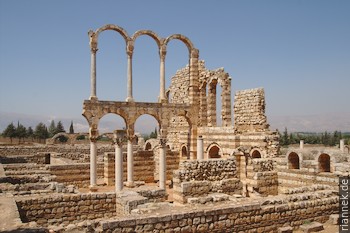
Hatred against the southern neighbour seems to be general (whereas a few decades ago some had still supported the Israeli invasion), and is often accompanied by fierce anti-Semitism. Near Beirut, for example, I meet a young man who seems sympathetic at first sight and who is pleased that I don’t simply believe what the media write about the Middle East, but look around for myself. But then he spreads out before me his anti-Semitic world view, which puts all my worst prejudices about Arabs in the shade. He starts by saying that the European media are lying because they are dominated by Jews; he tries to convince me that the Jews secretly rule the world. He thinks he is a slave who ultimately only works for the banks (although he drives a big car). He thinks the Holocaust was invented by the Jews to enforce the founding of the state of Israel and finally praises Adolf for doing the only right thing…. He counters my not exactly approving remarks by saying that we Germans no longer tell the truth because the Jews have gained power over us. Oh dear. The worst is that such ideas are quite common.
Read on
Backpacking trip Middle East and Caucasus 2008
Aleppo
Hama and Apamea
Krak des Chevaliers
Palmyra
Ramadan for travallers
Damascus
Absurd place on the roof